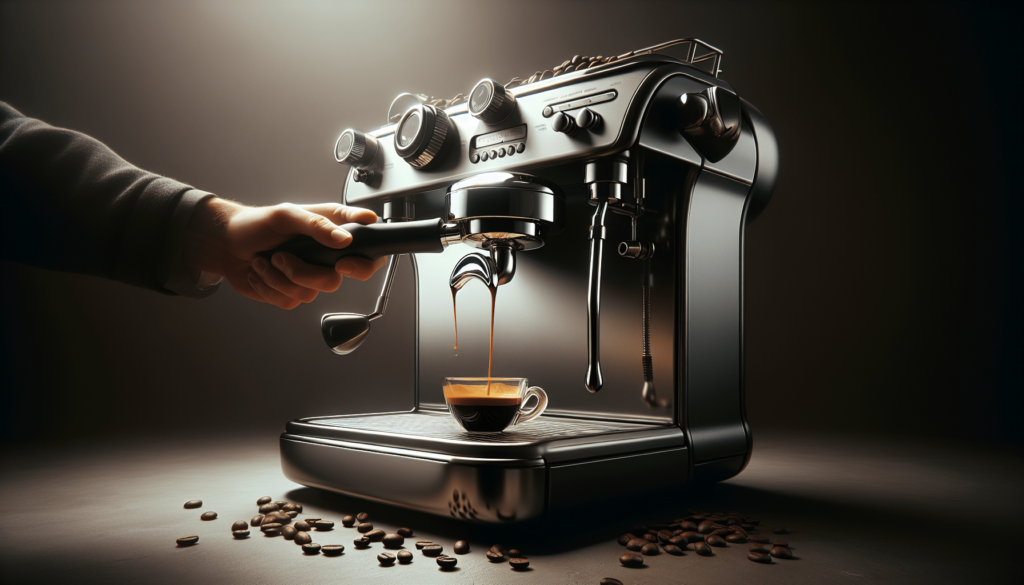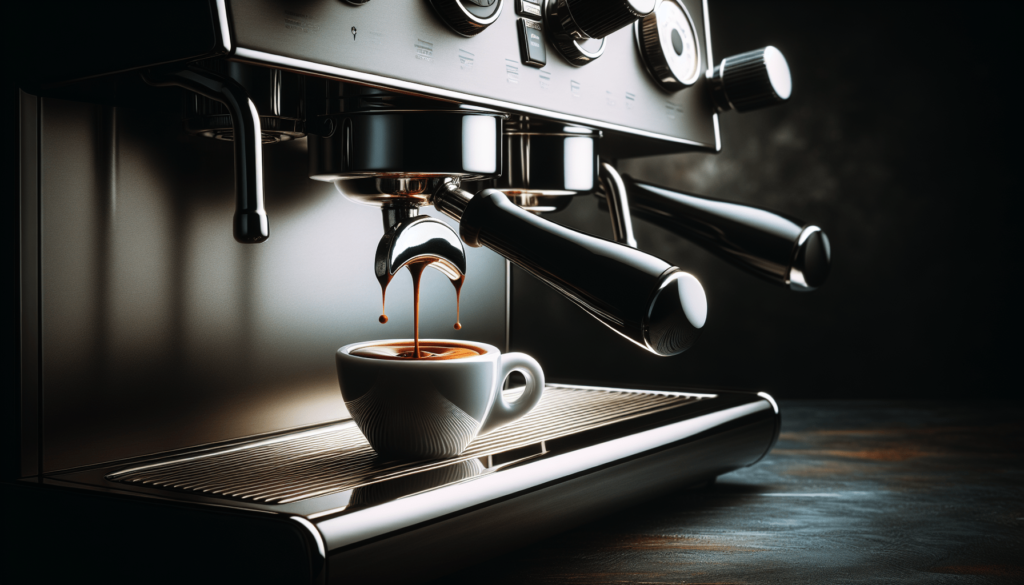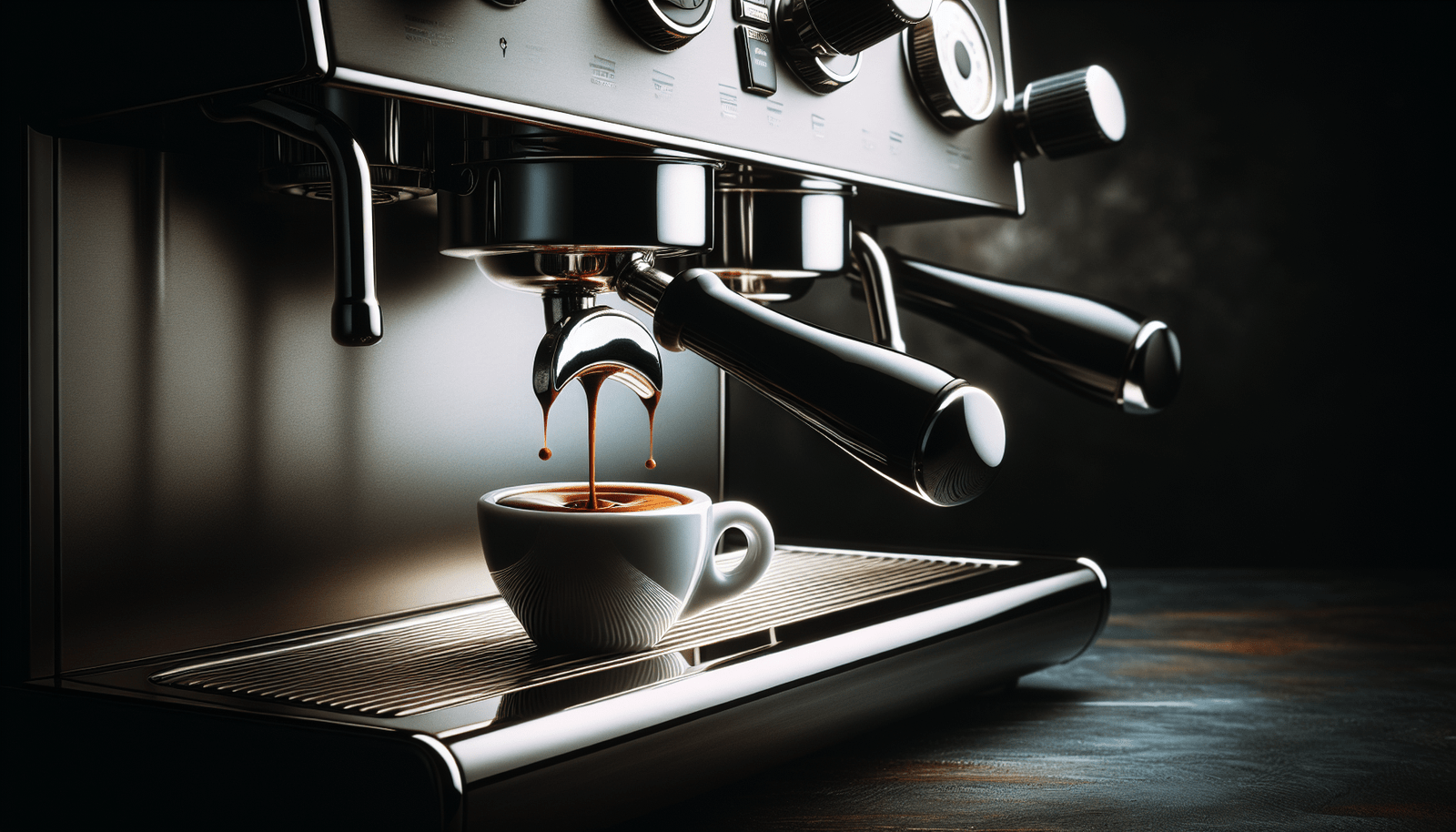Are you tired of spending a fortune at expensive coffee shops for a cup of perfect espresso? Well, look no further! In this article, you will learn the secret to making a perfect cup of espresso right in the comfort of your own home. With just a few easy steps and the right equipment, you can enjoy the rich, aromatic flavors of espresso without breaking the bank. So, grab your favorite mug and get ready to become your own barista in no time!
Choosing the Right Coffee Beans
When it comes to making a perfect cup of espresso at home, the first step is choosing the right coffee beans. Arabica coffee beans are highly recommended for their superior quality and flavor. Known for their delicate acidity and complex aroma, Arabica beans are ideal for creating a rich and smooth espresso. So, be sure to look for the Arabica label when purchasing your coffee beans.
Another factor to consider is selecting single-origin beans. Single-origin beans come from a specific region or country, which means they carry distinct flavors and characteristics unique to that place. This allows you to explore the diverse flavors of different coffee-growing regions and find the one that suits your taste preferences. Whether it’s a Brazilian, Ethiopian, or Colombian coffee, single-origin beans provide a wonderful opportunity to experience the nuances of flavor in your espresso.
Lastly, don’t be afraid to try different blends. Blending different varieties of coffee beans can result in a harmonious balance of flavors. Experimenting with blends allows you to create unique flavor profiles and find the perfect combination that satisfies your coffee cravings. So, be adventurous and explore the world of coffee blends to enhance your espresso-making experience.
Grinding the Beans
Grinding the coffee beans just before brewing is essential for a flavorful espresso. Investing in a good quality burr grinder is highly recommended. Unlike blade grinders, burr grinders provide a consistent and uniform grind size, ensuring optimal extraction of flavors from the coffee beans.
Adjusting the grind size to an espresso level is crucial. Finely ground coffee is necessary for slower extraction, resulting in a concentrated and robust espresso. If the grind is too coarse, the extraction will be weak and the espresso will lack body and flavor. Remember to find the right balance and adjust the grind size according to your personal preference.
Always grind the beans just before brewing. Oxidation starts to occur when coffee beans are exposed to air, causing loss of flavor and aroma. By grinding your beans right before brewing, you preserve their freshness and ensure a more delicious cup of espresso.

Water Quality and Temperature
The quality of water used to brew your espresso plays a significant role in its taste. Using filtered water is highly recommended as it removes impurities and enhances the overall flavor of the coffee. Tap water often contains chlorine or other chemicals that can negatively impact the taste of your espresso.
Boiling the water to the right temperature is equally important. The ideal range for water temperature when making espresso is between 195°F and 205°F (90°C and 96°C). This range allows for proper extraction of flavors from the coffee beans without scalding or under-extracting the coffee. Use a thermometer to ensure that your water reaches the optimal temperature for a perfect cup of espresso.
Measuring the Coffee
Accurate measurements are crucial to achieving the perfect ratio of coffee to water. Using a scale is highly recommended to ensure precise measurements. By following a coffee-to-water ratio, you can control the strength and consistency of your espresso.
A standard coffee-to-water ratio for making espresso is 1:2. This means using one part coffee to two parts water. For example, if you’re using 18 grams of coffee, you would use 36 grams of water. Adjust the ratio according to your taste preferences, but remember that altering the ratio too much can result in an imbalanced or weak espresso.

Tamping the Coffee
Tamping is the process of compressing the coffee grounds evenly and firmly in the portafilter, allowing water to pass through the grounds evenly during extraction. A properly tamped coffee bed ensures optimal water flow and enhances the flavor extraction process.
To tamp the coffee evenly, make sure to distribute the grounds evenly in the portafilter. Use your tamper to apply firm and even pressure, exerting a downward force on the coffee grounds. Maintain the right pressure without overdoing it, as excessive pressure can lead to uneven extraction and a bitter taste in your espresso.
Brewing Techniques
When it comes to brewing espresso at home, there are two popular methods: using an espresso machine or a Moka pot. An espresso machine provides more control over the brewing variables, while a Moka pot offers a simpler alternative for those who don’t have access to an espresso machine.
Preheating your equipment is essential for a consistent brewing process. Preheat your espresso machine or Moka pot to ensure that the water maintains its temperature throughout the brewing process. This step helps to extract the flavors properly and prevent any temperature fluctuations during extraction.
Timing the extraction is crucial for achieving the desired strength and flavor in your espresso. A typical extraction time for espresso is around 25-30 seconds. However, this can vary depending on your preferences and the specific coffee beans you are using. Experiment with different extraction times to find the sweet spot that suits your taste.
Controlling the water pressure during extraction is another important factor. If you’re using an espresso machine, make sure to adjust the brew pressure to achieve the right balance. Too high of a pressure can result in over-extraction and a bitter taste, while too low of a pressure can lead to under-extraction and a weak espresso. Finding the perfect balance will result in a well-rounded and flavorful cup of espresso.
Steaming and Frothing Milk
Steamed and frothed milk can elevate your espresso experience, providing smooth texture and creating a creamy layer on top of the espresso. Selecting the right milk is crucial for achieving the desired consistency and taste. Whole milk is commonly used for its creamy texture and balanced flavor, but you can experiment with different types of milk such as oat milk, almond milk, or soy milk to cater to dietary preferences or specific flavor profiles.
Using a steam wand or frother is the key to properly steaming and frothing milk. These tools introduce steam into the milk, creating tiny bubbles that give the milk its creamy texture. Position the steam wand just below the surface of the milk and slowly lower the pitcher as the milk heats up. Swirl the milk gently to incorporate the froth and create an even texture throughout.
Properly texturing the milk is essential for achieving the right consistency. The goal is to create microfoam, which is a velvety, shiny texture suitable for latte art or simply enhancing the taste of your espresso. Avoid large bubbles and aim for a silky, smooth texture that complements the intensity of the espresso.
Serving and Enjoying
To fully enjoy your perfectly brewed espresso, a few additional steps can make a significant difference. Preheating the cup is essential for maintaining the optimal temperature of your espresso. By pouring hot water into the cup and allowing it to sit for a minute, you ensure that your espresso stays hot for longer.
When pouring the espresso shot, aim for a slow and steady pour that creates a concentrated layer of crema on top. The crema is a rich, caramel-colored foam that indicates a well-extracted espresso and adds to the overall presentation and taste.
Drinking your espresso immediately is of utmost importance. Espresso is meant to be enjoyed promptly after brewing, as its flavors and aromas start to dissipate quickly. Sip your espresso slowly to fully appreciate the complex flavors and aromas that a perfectly brewed cup brings.
After enjoying your espresso, it’s crucial to clean and maintain your equipment. Regularly clean your espresso machine or Moka pot, as well as the grinder and steam wand. Calcium deposits and coffee residue can affect the taste of future brews, so proper maintenance will ensure that each cup of espresso is consistently delicious.
Experimenting and Personalizing
Brewing espresso at home allows for endless experimentation and personalization. Try different brewing methods to explore the various flavors and strengths that each method offers. Whether it’s using a French press, a pour-over, or an AeroPress, each method brings its unique character to the cup.
Don’t be afraid to adjust the variables to taste. Fine-tuning the grind size, coffee-to-water ratio, and extraction time can alter the flavor profile of your espresso. Keep a record of your adjustments, so you can recreate your favorite brews or refine them further.
While not essential to the taste, latte art adds a visual element to your espresso experience. Experiment with pouring techniques, such as creating heart shapes or fern patterns on the surface of the milk. It adds a touch of creativity and elegance to your cup, making each espresso feel like a work of art.
Common Mistakes to Avoid
To ensure that your espresso lives up to its full potential, here are some common mistakes to avoid:
-
Over-extraction or under-extraction: Finding the right balance in extraction time and grind size is essential to prevent an over-extracted or under-extracted espresso. These can result in a bitter or weak cup respectively.
-
Using stale coffee beans: Using fresh coffee beans is crucial for a flavorful espresso. Stale beans lack the intense aromas and flavors that fresh beans offer. Be sure to store your beans properly and use them within a few weeks of roasting.
-
Ignoring the importance of water quality: Water quality can significantly impact the taste of your espresso. Avoid using tap water that contains chlorine or other chemicals. Opt for filtered water to enhance the overall flavor.
-
Improper milk frothing: Achieving the right texture and consistency when frothing milk is important. Large bubbles or under-frothing can lead to an uneven and less enjoyable texture in your espresso.
-
Not cleaning the equipment: Regularly cleaning and maintaining your espresso machine, grinder, and frothing equipment is essential to prevent any buildup of residue or impurities that can affect the taste of your brew.
By avoiding these common mistakes and following the steps and tips outlined above, you’ll be well on your way to creating a perfect cup of espresso in the comfort of your own home. So, grab your favorite coffee beans, fire up your espresso machine or Moka pot, and embark on a journey of espresso-making excellence. Cheers to a perfect cup of espresso!

